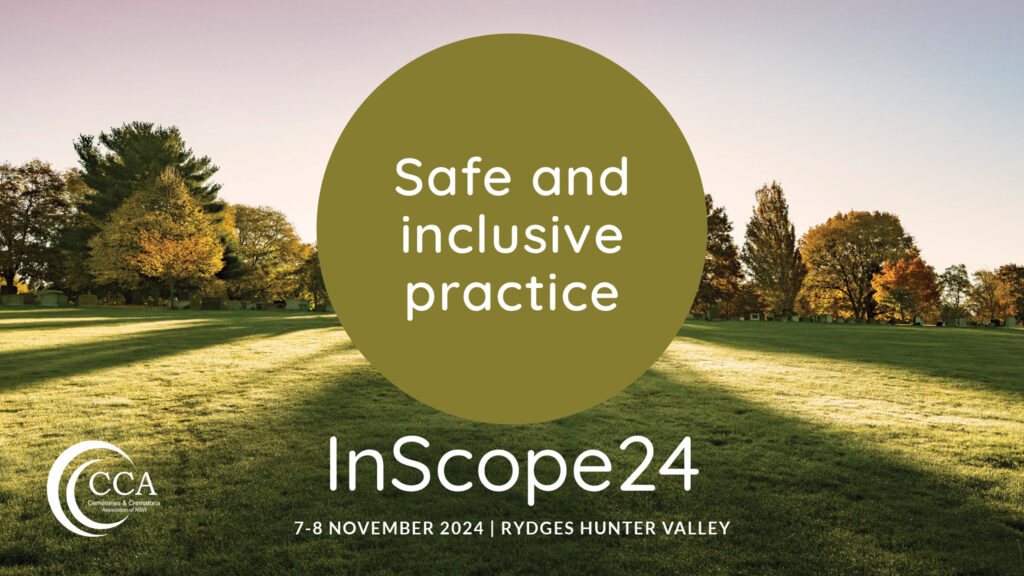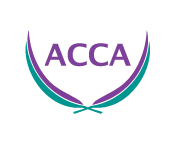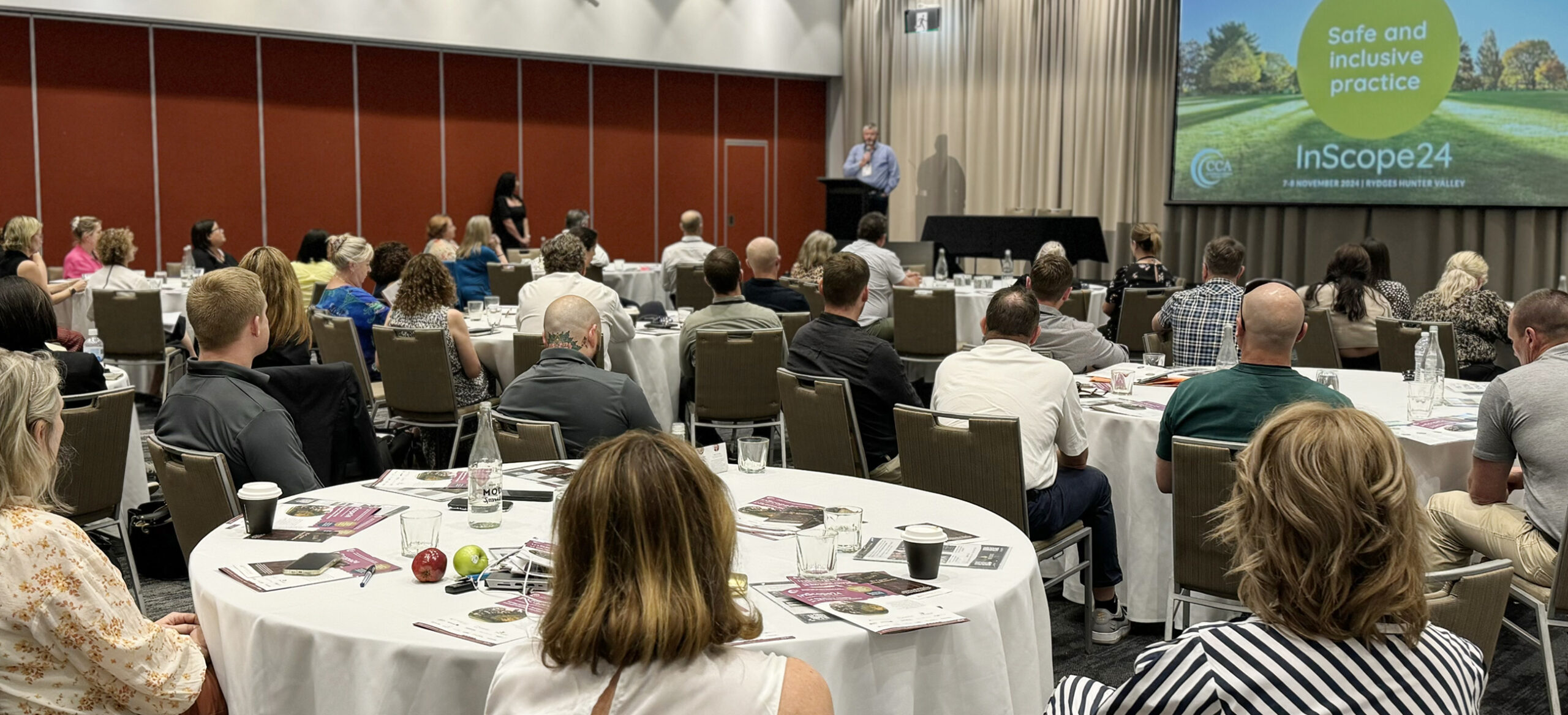The Cemeteries and Crematoria Association of NSW (CCANSW) held its regional seminar InScope24 at Rydges Resort Hunter Valley on 7-8 November 2024. The theme of safe and inclusive practice provided a wide scope to explore and clarify the regulatory context of our authorising environment as well as broaden our perspectives on community engagement, death literacy, placemaking activation, cultural humility, risk management and wellbeing.
Entering a New Chapter
As community hubs for remembrance, cemeteries, crematoria and memorial places are evolving to reflect cultural diversity, ecological awareness and communal connection. Updates at InScope24 revealed innovative approaches, regulatory insights and partnerships which are reshaping our spaces into inclusive places of learning, healing and cultural respect. Here are the highlights from InScope24 where deathcare sector leaders, regulators, cultural experts and operators explored the transformative shifts.
Regulation Roles
Cemeteries are not just resting places, they’re vital community spaces. David Raper (CCNSW, NSW Regulator) emphasised the need for respectful, accessible spaces which honour diverse memorial practices. With cremation and ash interment rates rising, data-driven strategies are central to managing custodial grounds, protecting customers and ensuring sustainable operations. Fiona Lansdown (CCNSW) provided an update on the Interment Industry Scheme’s (IIS) progress. With over 70% of licenses issued, the NSW regulator is focusing on streamlined compliance and making educational resources more accessible in the form of videos and webinars. As legislative changes to the NSW Cemeteries and Crematoria Act are proposed for early 2025, Fiona stressed CCNSW’s continued commitment to sustainable and consumer-centred improvements.
Public Health
Geoffrey Prendergast (NSW Health, Environmental Health Regulation Unit – EHRU) outlined regulatory aspects of public health and environmental standards. Delegate’s questions around emerging trends and issues, including coffin-less cremations, body composting, green bones, risks of cremating bodies treated with radiotherapy, highlighted what must drive EHRU’s guidelines for sustainable and dignified interment practices. Ultimately, NSW Health must address complex decomposition processes, soil impacts and health risks, especially as burial practices diversify. The InScope24’s audience engagement with this session underscored the need for more stakeholder consultations with cemetery, crematoria and funeral operators, as well as more research and international observation for policy refinement and updates or legislation which reflects the evolving landscape of the deathcare sector.
Collaborative Paths
Pop-up speaker Ben Kelly (ACCA) highlighted the value of shared learning and collaboration. Through accreditation programs, learning centres and state partnerships, Ben outlined ACCA’s aims to empower operators nationwide with a collective approach to developing and providing resources which tackle shared challenges and promote a high standard of service delivery and operational management.
Dynamic Interaction
InScope24’s World Café was a forum for all seminar attendees to interact and share perspectives, knowledge, experiences and sentiments across a range of on-point topics including environmental health, maintenance standards, contracts under the IIS, monument safety, forward-thinking priorities, religion and culture. Universally eye-opening, participants unanimously agreed the World Café was an incredibly insightful, meaningful and resonating engagement model with multi-dimensional benefits and learnings which they will take-away and experiment with in their own organisational contexts.
Embracing Engagement
Gabrielle Gatto (Green-Wood, NYC) spoke to the growing “zeitgeist moment” in death literacy and community-centred programs at cemeteries. By hosting death cafés, communal mourning events and natural burial tours, cemeteries can engage local communities, offering accessible ways for people to learn and connect. These initiatives foster understanding and healing, transforming cemeteries into active learning spaces which support people from all demographics through grief and loss. Gabrielle’s warmth and enthusiasm for her work developing death education, encouragement for low-cost or cost-offset programs and her inclusive community-centric approach were vibrantly transmitted via Zoom from New York to the Hunter Valley and the hearts and minds of all in the room.
Navigating Death
Lisa Herbert (Death Literacy) communicated society’s growing need for death literacy and a better understanding and acceptance of death and dying. Advocates and researchers emphasise that engagement with end-of-life topics, direct language and community-centred education can break down barriers around death. Programs which directly involve youth, such as Iona College’s cemetery care student community service, or which create other opportunities that invite community members to actively participate, inevitably cultivate respect for death and promote healthier, everyday conversations on mortality within families. As Australia faces a “peak death” period with the aging population, these death-based conversations and death-related initiatives become ever more crucial to equip individuals and communities with the resources, language and support needed for end-of-life planning, at-home palliative care, death acceptance – in short, talking about, engaging with and navigating death.
Cemetery Design
Kerry McMurray (Canberra) described a transformative approach to cemetery design which prioritises community identity, ecological sustainability and flexibility for diverse cultural practices. Examples from Gungahlin Cemetery illustrate how cemeteries can move beyond traditional functions, offering interactive spaces, natural burials and unique memorial products which reflect local history and values. Kerry shared activation and placemaking Initiatives such as virtual tours and adaptive condolence lounges for increased accessibility and engagement. He also covered financial sustainability, perpetual care initiatives and low-maintenance landscaping. This evolving model encourages cemeteries to serve as inviting, multipurpose spaces which honour the local community and embrace the future needs of families.
Cultural Inclusion
Sahar Dandan (Greendale) opened with prayer and blessings and highlighted the importance of cultural humility and understanding in serving the Muslim community’s burial needs. Islamic funeral practices prioritise simplicity and communal responsibility, with swift, shrouded and eco-friendly burial options such as cardboard and bamboo that align with traditional values. However, cemeteries often lack facilities for Islamic rites, underscoring a growing need for cultural accommodations such as time-sensitivity, washing areas and gathering spaces. As Australia’s Muslim population increases, especially in regional areas, inclusive engagement with culturally informed practices is vital. The Muslim approach to death is proactive and communal, emphasising forgiveness, preparedness and comfort with mortality that ultimately reflect a holistic, inclusive ethos which honours both tradition and compassion.
Prioritising Safety and Risk
Robert Humphries (Statewide Risk) stressed that effective cemetery management requires a proactive approach to risk mitigation, with frequent maintenance, documentation and clear signage to minimise incidents and claims. By adhering to AS ISO 31000, operators enact risk management as a part of daily operations, address hazards or high-risk areas and ensure compliance with regulatory standards. Strategic resource allocation and adequate insurance further bolster operational security and visitor safety, while accurate record-keeping provides a strong defence in the event of claims. Clear, well-placed signage and regular inspections tailored to demographic needs help create safer, more welcoming environments for all cemetery visitors.
Fostering Well-being
Jayne Cheswick (Coach and Facilitator) took us through PERMAH and how a psychologically safe workplace enhances innovation, collaboration and wellbeing, enabling organisations to thrive through change. Leaders can foster positive impact by encouraging openness, practising empathy and promoting self-care. Integrating small, daily practices for mindfulness, using techniques for inclusive meetings and teams, or tools for calming stress, all of which have been proven to help employees focus and move forward. In emotionally demanding fields, organisations which support workers in managing stress, build wellness and wellbeing to nurture and promote both individual and long-term organisational health and success.
A Better Future
From improved regulatory standards to innovative and bespoke community programs, the future of cemeteries lies in balancing tradition with change. As we adapt to cultural shifts and ecological priorities, we can shape dynamic spaces which serve both the living and the dead. Through strategic collaboration, cultural awareness and a commitment to safety and inclusion, our sector is poised to make an even deeper and more profound positive social impact for human connection and community.
InScope24 People
Uncle Richard Edwards welcomed us to Wonnarua Country and Bernadette Torresan was our gracious MC host. Alongside our speakers were warm and informative presentations from our CCANSW partners: Emma Goldie (Arrow Bronze), Rodney Claxton (Everlon), Patrick Whyte (Phoenix), Kris Miller (Plotbox) and Louise Hurford (Hyqual Australia). The CCANSW Board would like to thank all delegates, speakers, presenting partners and supporting sponsors for your participation and contribution to the success of InScope24. CCANSW is aiming to grow our community of practice and support our members with shared knowledge and collective experience. This article is also available on CCANSW’s website at ccansw.org.au/news/

This article was submitted for the ACCA News Summer Editor but was omitted in error, apologies to CCA NSW.

